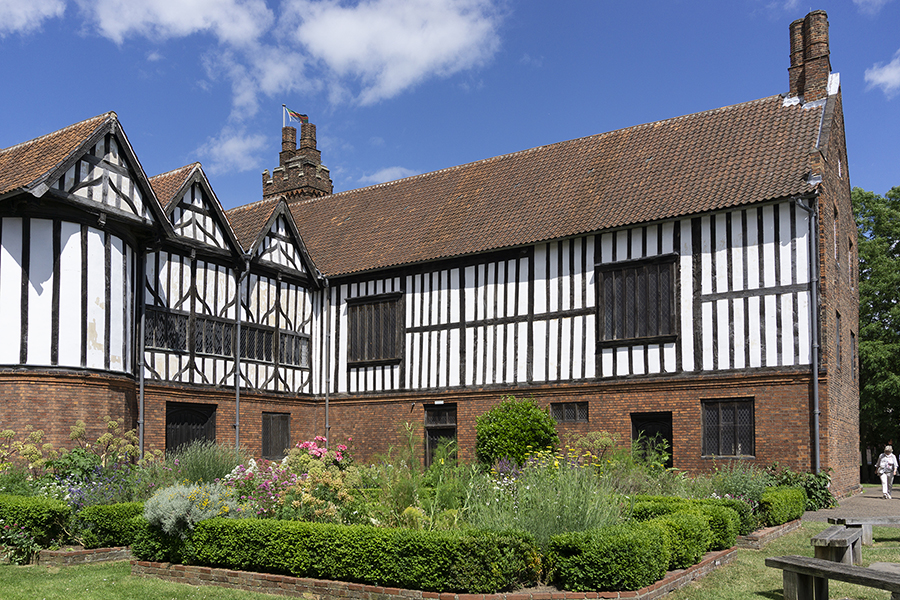 |
| Wing of old hall with herb garden |
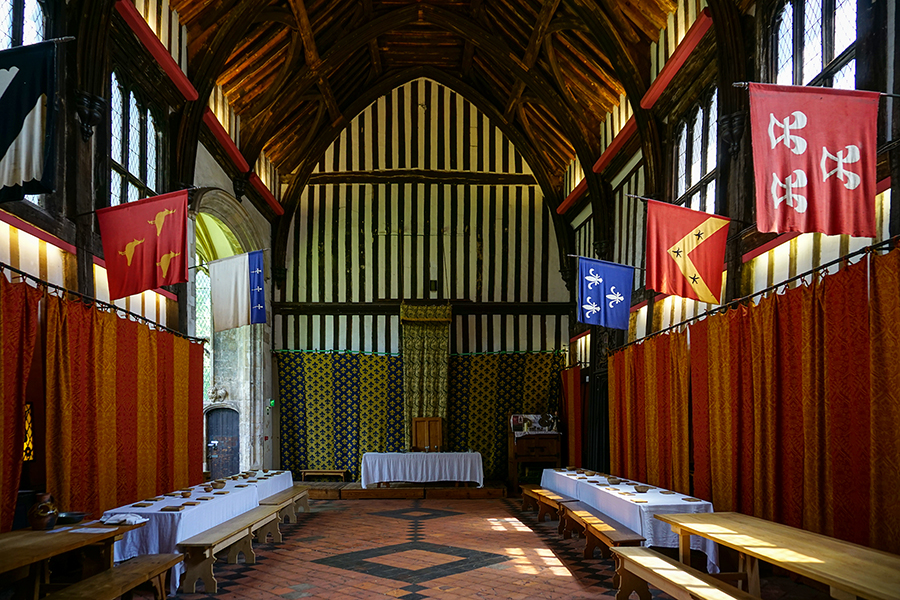 |
| The Great Hall looking towards the high table |
It is odd to think that in the 1960s there had been a plan to demolish the Old Hall to make a car park. Fortunately, the hall survived and is one of the finest of its type, drawing visitors to the town. It is sad to see that the town centre of Gainsborough has declined markedly since my visit in 2010 as a consequence of a new shopping area on a former industrial site called Marshall's Yard. On my visit in 2010 the old town centre was almost empty because of a major project to put in new paving. In 2018, it was so empty that I enquired if Thursday was half-day closing.
 |
| Wing of old hall with herb garden |
 |
| The Great Hall looking towards the high table |
 |
 |
|
| The Great Hall looking towards the kitchen | The tower gateway in 2010 | |
 |
 |
|
| The kitchen | Kitchen wing with domed vent | |
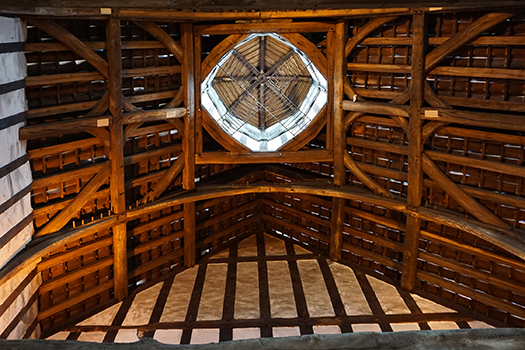 |
 |
|
| High kitchen roof with domed vent | Chimneys with church beyond | |
 |
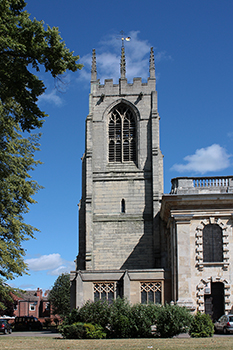 |
|
| All Saints Church of 1748 with its apse | Medieval tower | |
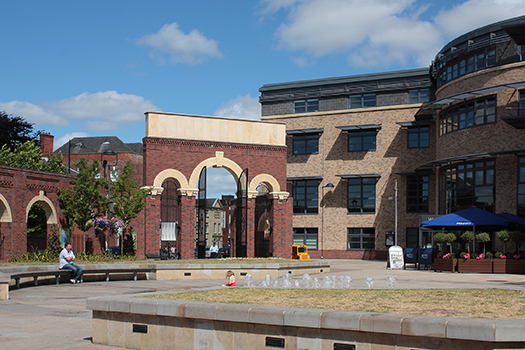 |
 |
|
| New Shopping area in 2010 | New Shopping area in 2010 |
Gainsborough was the most inland port in the country, 55 miles inland but accessible from the River Humber and then the Trent. This made it of interest to the Vikings and gives the town an important place in the history of that time. Today, one of the most unusual ways of finding a town's history without WiFi access is to go to a Wetherspoons tavern. There they will have on the walls displays about the town's past and Gainsborough is no exception. I was informed of Sweyn Forkbeard over my lunch.
Gainsborough is mentioned in 1013 in the Anglo-Saxon Chronicle as Gegnesburh and Gæignesburh and in 1086 it appears in the Domesday Book as Gainesburg. The suffix burh or burg indicates a fortified place. It was one of the main towns of the Anglo-Saxon kingdom of Mercia, which at its height was the predominant power in England covering the midlands and roughly bounded by the Welsh border to the west, the Thames to the south, East Anglia to the East and the Mersey and Humber to the north. However, if was subject to the Danish invasions. In 1013, the Dane, Sweyn Forkbears arrived in Gainsborough with an army and defeated the Anglo-Saxons. King Ethelred fled and Sweyn was declared King, making his headquarters at Gainsborough. Only five weeks later, Sweyn was killed by a fall from his horse. His son Cnut or Canute became King from 1016 to 1035. In addition he became King of Denmark, Norway and some of the Swedes. After his death, Canute's empire soon dissolved and in due course the English throne reverted to the House of Wessex, with Edward the Confessor, the last king of that line, ruling from 1042 until 1066. Gainsborough never regained the brief glory that it had enjoyed in 1013.
In 1455, Thomas Burgh became lord of the manor of Gainsborough and built the Old Hall in the years between 1460 and 1480 in the reigns of Edward IV and Richard III. Sir Thomas is also celebrated for his support for the church at Newark and for the Chantry and Alms Houses in Gainsborough. It is said to be one of best surviving examples of this type of timber house. In addition to the timber framed sections there is also a brick built tower over the entrance. Richard III stayed at the hall in 1484. Sir Thomas had a son Edward who died in 1528 and his eldest son Sir Thomas succeeded. His son, Sir Edward, married Catherine Parr, who later married Henry VIII. Henry VIII visited the Old Hall twice, once 1509, the year he came to the throne and again in 1541 with his fifth wife, Catherine Howard, who was executed in 1542. By this time Sir Edward Burgh had died and his widow married Henry VIII as his sixth wife.
The fifth Lord Burgh, Thomas died without heir so in 1596 the manor was sold to William Hickman, a London merchant. He and his mother became supporters of John Smyth, a preacher born in Nottinghamshire and eduated at Gainsborough Grammar School then Christ's College, Cambridge, where he became a fellow in 1594. He was ordained the same year but soon afterwards broke with the Church of England and went to Holland where with a group of followers he formed one ofo the first Baptist churches. A hundred and fifty years later, Sir Neville Hickman was also a supporter of Nonconformist views and invited John Wesley to preach in the Great Hall several times between 1759 and 1764.
As the Hickman's had built a new house at Thonock in 1720, the Old Hall was unoccupied. Today it is in the care of English Heritage having been looked after by the Friends of the Old Hall from 1949 and given to the nation in 1970 by Sir Edmund Bacon. It is Grade I listed. The main features are the great hall itself and the magnificent kitchen with its high ceiling and dome to let out the heat from cooking.
A church was recorded at Gainsborough in 1180. The medieval church, with the exception of the west tower, was demolished 1736 and a new once completed in 1748. The tower houses 8 bells. There is a monument in the porch to Richard Rollett, the master sailmaker for Captain Cook's second voyage to Australia, in the period 1772 to 1775.
Wikipedia sites on Gainsborough and on Gainsborough Old Hall
Gainsborough Old Hall's own site